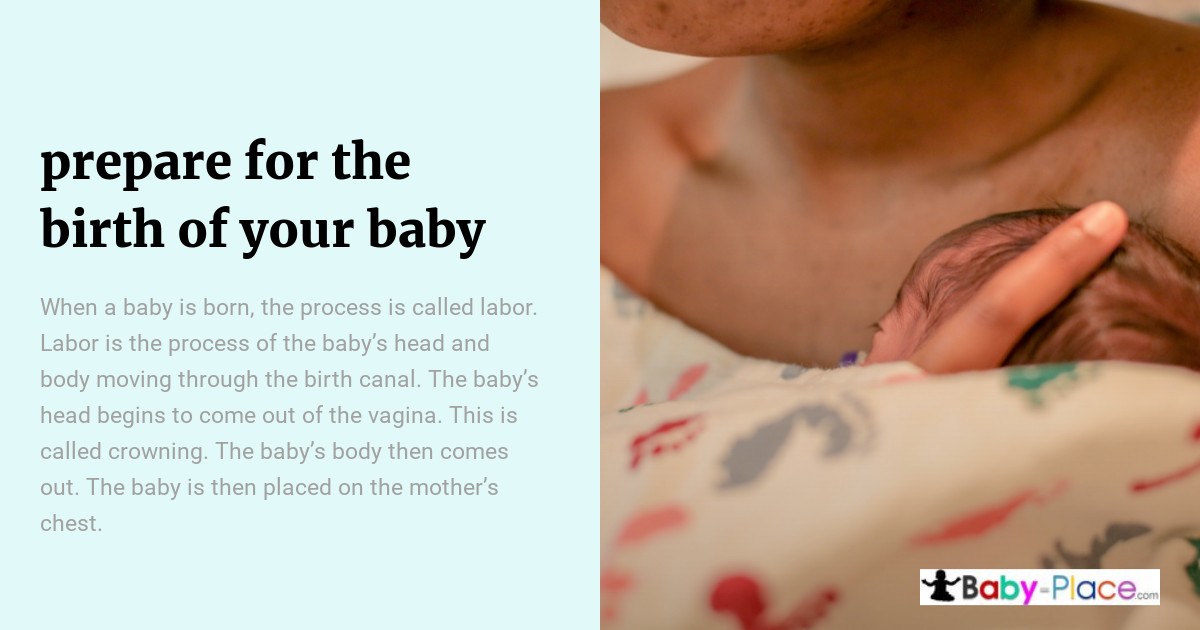The choice of the sex of your future baby is a highly personal decision. As a reproductive health specialist, I understand that couples have different preferences when it comes to the gender of their offspring and is sometimes looking for ways to increase the likelihood of having either a boy or girl. In this article, I will provide an overview of some strategies available to prospective parents that may help them choose the sex of their child.
First, it’s important for readers to be aware there are no guarantees when trying to influence the sex of your baby. However, there are certain methods that can improve your chances in selecting between male and female embryos. For instance, sperm sorting technology has been developed over recent decades as one option – allowing fathers-to-be to determine if they wish to use X (female) or Y (male) chromosomes from semen samples during IVF treatment cycles.
Finally, diet and timing also increase odds in choosing particular genders due to differences in how male and female cells behave differently depending on environmental factors such as pH levels and temperature. By exploring these options further, soon-to-be parents can gain insight into what might work best for them when deciding upon their preferred gender outcome before conceiving.
Definition
It is a miracle of science that parents can now decide the sex of their baby. With modern technology, couples no longer have to leave it up to chance whether they will be blessed with a boy or girl. It’s an incredible opportunity for families who wish to plan ahead and ensure their family composition fits perfectly in line with their dreams!
There are various methods available for selecting the gender of your child before conception, ranging from dietary changes to assisted reproductive techniques. The most successful approach depends on individual circumstances and medical history, but all require careful consideration and informed decision-making by both partners. In addition, there may be legal restrictions on certain gender selection procedures depending on where you live, so make sure you check local laws before making any decisions.
Understanding Fertility
When trying to conceive, understanding fertility is key. To increase the chances of having a baby with the desired gender, it is important for both partners to understand their own physiology and identify potential issues that may affect reproductive health. Here are some aspects about fertility that couples should be aware of:
- Ovulation timing: Most women ovulate once per cycle; however, there can be variations in this pattern due to lifestyle factors such as stress or diet. Tracking ovulation patterns by charting basal body temperature (BBT) or using an over-the-counter fertility monitor can help couples determine when they’re most fertile and plan accordingly.
- Sperm count/health: Low sperm counts or unhealthy sperm can make conceiving more difficult. Men should have regular checkups with their doctor and discuss any concerns related to their reproductive health.
- Egg quality: Poor egg quality can also reduce the chance of conception. Women should pay close attention to their overall health, including eating right and getting enough exercise, which can improve egg quality.
- Diet habits: Certain dietary choices can impact hormone levels which could affect fertility. Eating plenty of whole foods, reducing processed sugars and avoiding alcohol or tobacco products will promote optimal reproductive health for both partners.
By making informed decisions about individual reproduction systems, couples can take proactive steps towards achieving pregnancy goals. Taking control of one’s fertility journey not only increases the likelihood of success but provides peace of mind during what can be a stressful time. With knowledge comes power – so learning all you can about your partner’s reproductive system is essential for planning ahead and increasing your odds at conceiving a child with the desired gender.
Pre-Implantation Genetic Diagnosis (Pgd)
Pre-Implantation Genetic Diagnosis, or PGD, is a reliable and accurate method of selecting the sex of your baby. According to recent studies, over 90% of couples who have chosen this option have been successful in achieving their desired outcome. As a reproductive health specialist, I strongly recommend that you consider using this technique if you are interested in choosing the gender of your child.
PGD involves collecting cells from an embryo created through In Vitro Fertilization (IVF). A genetic specialist then examines these cells for any chromosomal abnormalities and can determine the sex of the embryo with almost 100% accuracy. After analyzing the results, only those embryos whose gender matches what you desire will be implanted into the uterus. This procedure allows couples to make sure they’re having a healthy baby while also ensuring it has their preferred gender.
Overall, Pre-Implantation Genetic Diagnosis is one of the most efficient ways to select the sex of your unborn child. It offers high success rates as well as peace of mind by allowing parents to know exactly what kind of infant they will welcome into their family.
Artificial Insemination Techniques
After discussing the pre-implantation genetic diagnosis (PGD) process to determine gender of a baby, there are other methods couples can use to increase their chances of selecting the sex of their offspring. Artificial insemination techniques involve transferring sperm into the uterus or fallopian tubes for conception and is often used when couples have difficulty conceiving naturally.
| Technique | Pros/Advantages | Cons/Disadvantages |
|---|---|---|
| Intrauterine Insemination (IUI) | Simple procedure Cost-effective No side effects on fertility potential | Low success rate Chance of multiple births if more than one embryo implants |
| Intracytoplasmic Sperm Injection (ICSI) | Higher chance of successful fertilization Ideal for male infertility problems Can select single normal-looking sperm cell | Costlier than IUI Higher risk of complications from injection Increased risk of birth defects with abnormal looking sperm cells |
Both these procedures allow couples to choose the sex of their child and provide a higher possibility of achieving desired results as compared to natural conception. The semen sample is processed before insemination, which separates X chromosomes that carry female genes from Y chromosomes bearing male ones. This allows for better control over what type of sperm will be inserted into the uterus or fallopian tube. However, this method does not guarantee accuracy and may lead to incorrect outcomes due to factors such as timing errors. It is important to consult with an experienced reproductive health specialist who can guide you through all your options based on your individual situation and preferences.
Intracytoplasmic Sperm Injection (Icsi)
According to the American Society for Reproductive Medicine, 1 in 3 couples in the U.S. are now relying on assisted reproductive technology (ART) to help them conceive a child. Intracytoplasmic Sperm Injection (ICSI), is one of these treatments and has been used successfully since 1992. It’s an advanced form of IVF that involves injecting a single sperm directly into an egg which can then be implanted into the uterus of a potential mother-to-be.
The advantage of ICSI is that it provides us with more control over who will become pregnant with male or female embryos. This allows us to better plan for gender selection as part of family balancing, something that was not possible before this technique was developed. While there may be ethical considerations when deciding how you want your baby’s sex to be determined, ICSI does offer a reliable way to achieve this goal if so desired.
Sperm Selection Methods
Following Intracytoplasmic Sperm Injection (ICSI), sperm selection methods come into play. These techniques allow couples to choose the sex of their baby before conception occurs. Depending on the desired outcome, either male- or female-producing sperm can be chosen for fertilization. Sperm separation and sorting are two common procedures that utilize specific characteristics such as size and shape in order to differentiate between X- and Y- chromosome bearing spermatozoa. The process is not 100% reliable but it increases a couple’s chances of having a child of a particular gender. Additionally, preimplantation genetic diagnosis (PGD) allows embryos created via IVF to be tested for chromosomal abnormalities prior to transfer. During this procedure, an embryo’s chromosomes can also be identified allowing parents to select an embryo that is either XY or XX depending on their preference. Ultimately, these advanced technologies offer hopeful parents more control over their reproductive destiny than ever before.
Gender Selection Kits
Gender selection kits are available for those who want to choose the sex of their baby. These kits use a variety of methods, including sperm sorting or preconception supplements that help to increase the chances of having either a boy or a girl. Sperm sorting requires couples to undergo in-vitro fertilization (IVF) and involves separating X chromosome carrying sperm from Y chromosome carrying sperm. This can be done by spinning samples at high speed and then collecting the desired type of sperm. Preconception supplements work by creating an environment which is more favorable for one gender than another. However, these methods have not been scientifically proven to be effective, so it is important to discuss them with your doctor first before undergoing any treatment plan. It’s also essential to remember that no matter what method you choose, there are still no guarantees when it comes to predicting the sex of your future child.
Diet And Supplementation Strategies
The power to choose the sex of your child is an ancient dream made possible by modern science. While there are no guarantees, a combination of diet and supplementation strategies can increase the likelihood that you’ll have a baby girl or boy.
For those hoping for a daughter, diets rich in calcium and magnesium may be beneficial. Calcium-rich foods like yogurt, cheese, broccoli, and kale should be consumed regularly throughout the fertility period; magnesium sources such as pumpkin seeds and spinach should also be part of one’s regular diet during this time. Additionally, taking Vitamin C supplements has been linked to higher chances of conceiving a female infant.
Conversely, couples wishing to conceive a son should focus on consuming more sodium and potassium than usual. Sodium-rich snacks like pretzels or potato chips should become staples in their daily diet during the fertility window; bananas and other potassium-rich fruits can help too. It may also be helpful for males to take zinc supplements before conception for increased sperm count leading to greater odds of having a son.
Overall, it is important to remember that these methods must be combined with proper timing for best results – when attempting gender selection through natural means, both partners need to understand how their lifestyle choices will affect the outcome.
Timing Of Sexual Intercourse
Now that you have explored the different dietary and supplement strategies to help select your baby’s sex, it is important to understand how timing of sexual intercourse can play an important role. The timing of sexual intercourse in relation to ovulation is one of the most common methods used by couples when trying to choose the sex of their baby. This method involves having intercourse on or around the time when a woman releases an egg during her menstrual cycle (ovulation). It has been suggested that sperm carrying male chromosomes swim faster but don’t live as long as those with female chromosomes; therefore, if you are hoping for a boy, then it is best to have intercourse close to ovulation since this will give them less time to die off before reaching the egg. Conversely, if you would like a girl, then vaginal intercourse should take place several days prior to ovulation so that there will be more time for the slower-swimming female sperm cells to reach and fertilize the egg. It is also important to note that some studies suggest certain positions may increase success rates depending on which gender you desire. For example, shallow penetration favors male sperm because they travel faster than female ones; however, deep penetration allows for both types of sperm cells closer access to the cervix where they can survive longer until contact with the egg occurs. Additionally, current research suggests that using lubricants could negatively affect fertility regardless of desired gender selection. Therefore, it is recommended not use any type of lubricant while attempting natural gender selection techniques. In light of all these considerations, couples who are interested in selecting their child’s gender must consider many factors such as diet and supplementation strategies combined with ideal timing and position during sexual intercourse in order achieve successful results.
Acupuncture & Chinese Herbal Medicine
Acupuncture and Chinese herbal medicine are two holistic practices that have been used to help couples achieve their desired gender for their baby. Acupuncture is based on the belief that energy, or qi, flows through pathways in the body known as meridians. When certain points along these meridians are stimulated with needles, it can influence reproductive health. Studies suggest acupuncture may improve blood flow to the uterus and increase the rate of conception when trying for a boy or girl.
Chinese herbal medicine has also been used by couples looking to conceive a particular sex baby. Herbal remedies such as Shatavari root, Chasteberry concentrate, Red Clover Blossom tea and Dong Quai capsules have all been traditionally used to support healthy fertility outcomes. Many practitioners use specific combinations of herbs tailored to an individual’s needs based on factors such as age or medical history.
Although there is limited scientific evidence supporting these methods for determining gender, some couples find them helpful as part of their overall fertility plan. It’s important to remember that although selecting your child’s gender may be desirable for personal reasons, ultimately it should not take precedence over having a healthy pregnancy and baby no matter what sex they turn out to be.
Whelping Box Methodology
Now that we’ve discussed the potential benefits of acupuncture and Chinese herbal medicine, let’s move on to a different method for influencing your baby’s sex: whelping box methodology. This technique is an old wives’ tale with no scientific backing, but some people swear by it nonetheless.
The idea behind this approach is that you can choose the gender of your baby based on where you place them in the bed when sleeping during conception. If you want a boy baby, sleep with your head toward the north end of the room or bed; if you desire a girl baby, sleep with your head toward the south end instead. It has even been suggested that placing a wooden box at either side of the bed may help increase chances of conceiving one particular gender over another. However, there are just as many reports stating this doesn’t work as those claiming success stories.
Given its lack of evidence-based results, it would be wise to take this method with a pinch of salt and remember that ultimately nature will decide what kind of baby you have.
Pros And Cons Of Choosing Baby’s Sex
Choosing the sex of your baby can be an incredibly important decision for many couples. Before deciding if this is something you want to pursue, it’s important to understand both the potential benefits and risks associated with gender selection.
Pros:
Social Reasons:
- Some parents may prefer a certain gender due to cultural or religious reasons.
- Others may feel that having children of both genders will provide them with more balance in their family life overall.
Health Reasons:
- Couples who have genetic diseases linked to one gender specifically might choose gender selection in order to reduce the risk of passing down those conditions.
Cons:
Ethical/Moral Questions:
- Gender selection raises questions about morality, as some people believe it could lead to discrimination against one particular group at a population level.
Financial Cost:
- Depending on which method you use, choosing the sex of your baby can be quite expensive and not covered by insurance plans. It may also require multiple attempts before success is achieved, resulting in additional costs incurred.
Before making any decisions regarding gender selection, it’s important for couples to consider all aspects carefully and discuss any concerns they have with a reproductive health specialist.
Ethical Considerations
When making the choice to determine the sex of your baby, it is important to consider any ethical implications. The decision to choose a child’s gender before birth can be viewed by some as an act of eugenics or manipulation of nature that could have serious consequences for society in the future.
| Pros | Cons |
|---|---|
| Reduced chance of genetic disorders | Seen as unethical by certain cultures |
| Reduces costs associated with care and treatment for conditions caused by chromosomal abnormalities like X-linked diseases and Turner Syndrome in females | May lead to gender imbalance in countries where favoritism towards one gender exists |
Additionally, there are potential legal concerns when selecting a baby’s sex, such as whether this should be considered discrimination or not. Therefore, couples must weigh all the pros and cons carefully to make sure they make an informed decision. Furthermore, they should also seek out unbiased advice from medical professionals who understand their individual circumstances.
It is essential that those planning on choosing their baby’s sex take into account both physical and social aspects of the decision. Parents should consult trusted health professionals about available options, potential risks, and any other considerations relevant to their situation before deciding which path is right for them.
Cost Of Sex Selection Procedure
The cost of sex selection procedures can be substantial, depending on the method chosen. Generally speaking, there are four main ways to select a baby’s gender: preimplantation genetic diagnosis (PGD), sperm sorting technology such as MicroSort®, Ericsson Method, and fetal ultrasound.
- Preimplantation Genetic Diagnosis (PGD) is an expensive procedure that involves in vitro fertilization (IVF). It costs around $20,000 or more for each cycle performed.
- The MicroSort® System uses flow cytometry to sort X-bearing sperm from Y-bearing sperm before they’re used in artificial insemination or IVF with intracytoplasmic sperm injection (ICSI). This process has a success rate of up to 90%. Each attempt at MicroSort® may range anywhere from $3,500 – $8,000 per sample tested.
- The Ericsson Method separates male-producing sperm away from female-producing ones using alkaline pH solutions and centrifuging them into two different fractions. This technique averages between $850-$2500 per sample processed and promises a 75% accuracy rate for conceiving either a boy or girl.
- Fetal Ultrasound is one of the cheaper options available when it comes to selecting your baby’s gender; however, it isn’t foolproof like other methods mentioned above since you’re relying solely on visual identification by trained sonographers who have some room for error due to ambiguous results sometimes being produced during pregnancy ultrasounds. Despite this fact, prices typically range anywhere from free all the way up to several hundred dollars depending on where you go and what kind of package you purchase if any extras outside just seeing the sex of the fetus are included.
It’s important to carefully weigh all possible factors involved before making the final decision regarding which option to choose when attempting to select your baby’s gender through medical intervention or assistance of any kind–costs aren’t the only factor here! You should also consider safety and efficacy data as well as potential legal consequences associated with doing so before proceeding further down this path if desired by both parents involved in creating life together
Alternatives To Gender Selection
Choosing the gender of your child can be a complex and controversial decision. While there are methods available to assist in choosing the sex, they come with their own set of risks and costs that should be considered before making any decisions. Therefore, it is important to explore all options for selecting an individual’s sex prior to engaging in such procedures. Below we will provide a brief overview of some alternatives to traditional gender selection techniques:
| Method | Pros | Cons |
|---|---|---|
| Natural Selection | Cost-effective; no medical intervention required | Limited control over the outcome; requires patience & luck |
| Sperm Separation | High success rate | Involves hormone injections and expensive technology |
| Preimplantation Genetic Diagnosis (PGD) | Highly accurate results | Invasive procedure; must have access to reproductive technology services |
Each alternative discussed has its own benefits and drawbacks that need to be carefully weighed and evaluated by individuals considering using them as part of their family planning journey. It is recommended that couples consult with a healthcare professional knowledgeable about reproductive health technologies prior to making any final decisions on how they would like to proceed when it comes to determining the sex of their future offspring. Ultimately, only those involved can decide what path best suits their needs, values, and beliefs.
Conclusion
In conclusion, gender selection is a highly personal decision with many ethical and financial considerations. As reproductive health specialists, we recognize that this may be an emotionally charged topic for our patients. Ultimately, it’s important to weigh the pros and cons of gender selection before making any decisions.
One interesting statistic about sex selection is that in some parts of the world there are more male births than female; in India, for instance, 107 boys are born for every 100 girls. This suggests that even without medical intervention, parents can find themselves naturally selecting their baby’s gender.
We believe everyone should have access to accurate information when considering gender selection as part of their family planning process. We encourage all interested individuals to talk openly with their healthcare provider or fertility specialist if they wish to explore this option further.











